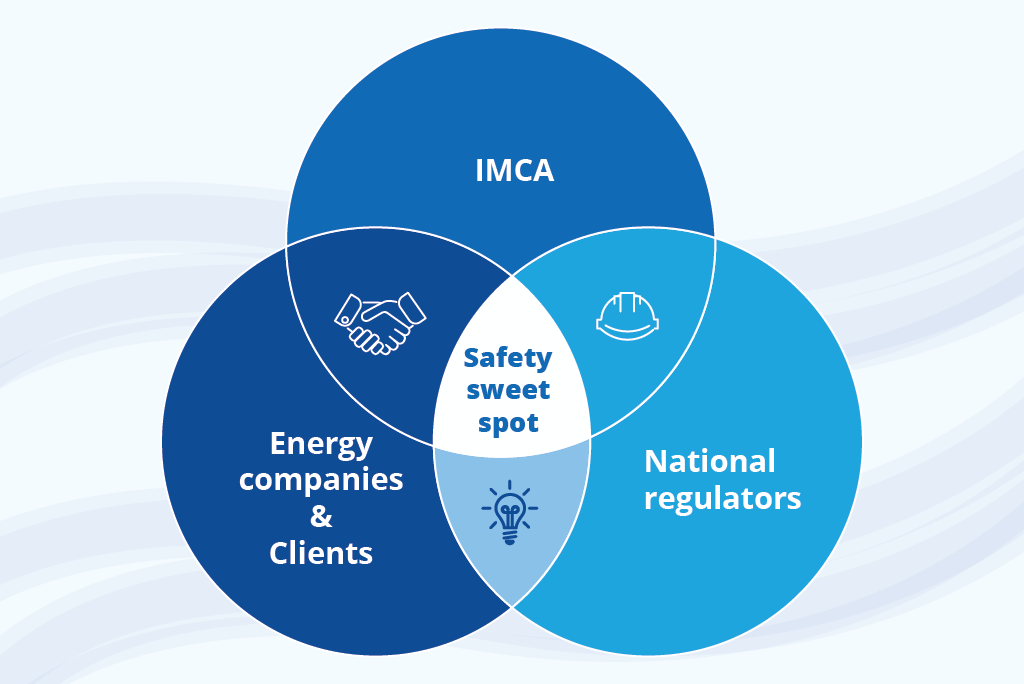Commentary: Finding the ‘safety sweet spot’
Published on 3 April 2024
IMCA has a long, and proud, history of bringing the industry together to improve safety and our Members share a common goal of improving offshore performance.
Our Technical Library creates the framework to achieve this through the recommended best-practice that our Members and the wider sector follows. Whether diving, marine, remote systems and ROV, or offshore survey – we set the standard through our Technical Committees, Guidance, and Information Notes. Alongside this, for 25 years we have worked at the International Maritime Organization (IMO) to positively shape the regulatory landscape on a global level.
Of course, no sector should work in a bubble, and our goal – of improving offshore safety – will only be achieved through collaboration, as well as proactive engagement with clients, the supply chain, and other stakeholders.


IMCA Contact
Iain Grainger
CEO
Contact
The key is finding what I call the ‘safety sweet spot.’ Imagine if you will the centre of a Venn diagram which brings together national regulators, major energy companies and clients, and IMCA with its technical expertise and relentless focus on improving safety. Ensuring all groups are working in close partnership, and are closely aligned, will create the ideal conditions for a net positive outcome for offshore safety.
What does this mean in practice? IMCA continues to work extremely closely with regulators across the globe. We’ve long-standing relationships with the UK HSSE and HM Maritime & Coastguard Agency. We have taken a similar approach in the USA by working with BSEE and US Coastguard, as well as in Australia with the Royal Australian Navy and NOPSEMA. We have strong links with national navies in South Africa, India, and New Zealand, as well as the Petroleum Safety Authority in Norway.
In recent times IMCA has focused on applying this approach in countries and sectors where we have built strong relationships with energy companies, have keen national regulators, and – most importantly – proactive local Members.
For example, in Brazil, we have spent the last five years building relationships with both the Brazilian Navy (as the national regulator) and Petrobras (as the national energy company). Thanks to the energy, enthusiasm, and drive of our South American Regional Committee, chaired by John Chatten of Fugro, we have been able to ensure that IMCA Guidance is now fully recognised as the de-facto approach to operating offshore by the major national energy company. We have also been awarded a prestigious ‘Friend of the Brazilian Navy’ Award in recognition of our positive working partnership.
We have used our Regional Meetings in South America to create a forum where IMCA Members can engage directly with regulators and the major national client. For Petrobras, our meetings ensure a direct line with their supply chain, and for the Brazilian Navy, an efficient route to stakeholder engagement.
This is an approach which are looking to repeat around the globe, most notably in our Asia-Pacific region, with proactive engagement with national energy companies and regulators in several countries including Malaysia, Indonesia, and others. I hope to be able to share more details of the fruits of this work soon.
Finally, last year we held a workshop in partnership with board Member G+ on Emergency Response in Offshore Wind, which brought together the US Coastguard, offshore wind developers, and IMCA Members to identify and address local safety issues.
My message to national regulators and major energy clients around the world is a clear, Join us! Help us work together and collaborate to find the safety sweet spot in your country or sector. With more than 50 years’ experience of bringing the industry together, and an unrelentless focus on safety, we are uniquely placed to drive a positive outcome for all.
Iain Grainger is CEO of IMCA.
